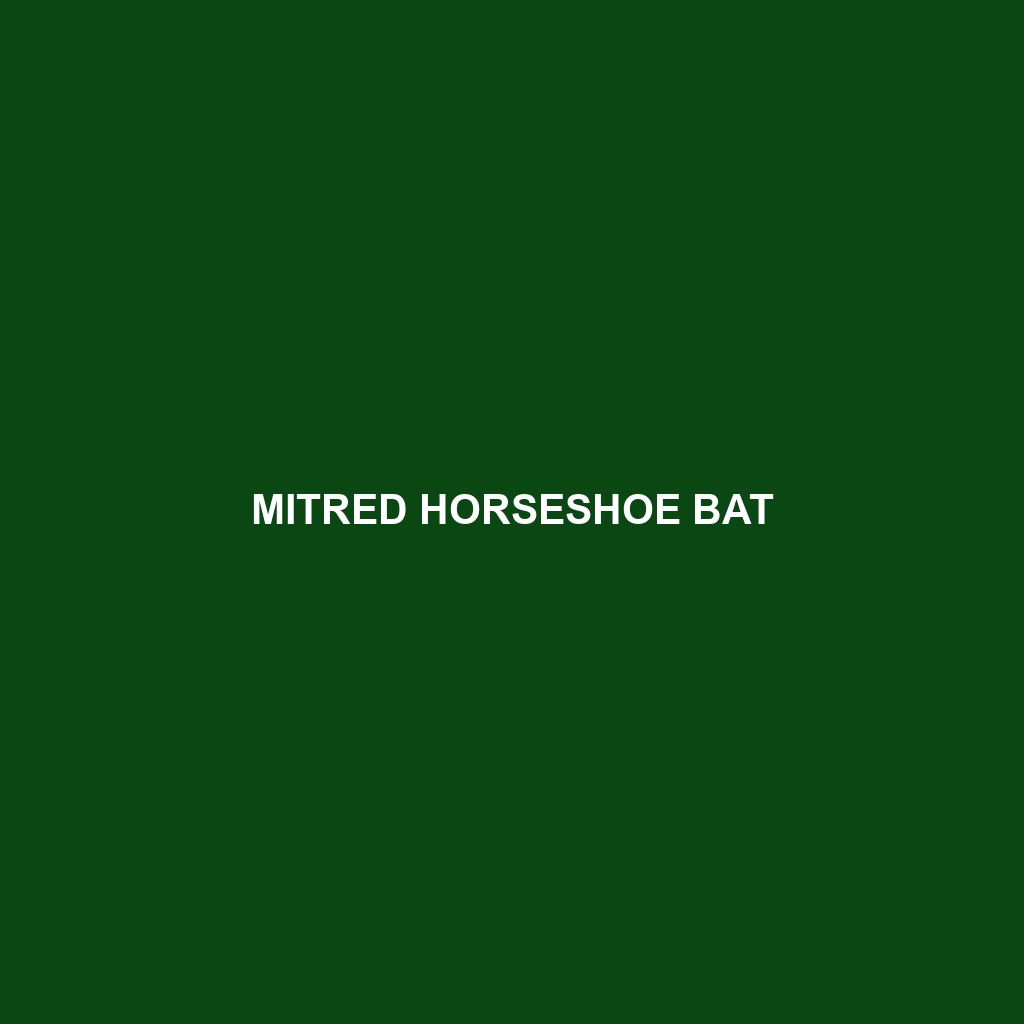Gulf of Oman Horseshoe Bat
Common Name: Gulf of Oman Horseshoe Bat
Scientific Name:
Habitat
The Gulf of Oman Horseshoe Bat primarily inhabits the rocky and coastal areas of the Gulf of Oman, specifically found in countries such as Oman and parts of the United Arab Emirates. They favor warm, arid environments and are often located in caves, cliffs, and dense foliage where they can roost during the day. These habitats provide essential protection and suitable microclimates for their survival.
Physical Characteristics
The Gulf of Oman Horseshoe Bat is a medium-sized bat, typically measuring between 60-70 mm in body length with an impressive wingspan of up to 35 cm. They are characterized by a distinctive horseshoe-shaped noseleaf, which plays a crucial role in echolocation. Their fur tends to be a mix of brown and grey tones, providing excellent camouflage against rocky surfaces. Noteworthy features include large, rounded ears and a patagium that stretches from their forelimbs to their ankles, aiding in their swift flying capabilities.
Behavior
Gulf of Oman Horseshoe Bats are predominantly nocturnal, emerging at dusk to forage for food. They exhibit social behavior, often roosting in colonies and communicating through a series of ultrasonic calls. Their echolocation abilities allow them to navigate and hunt in complete darkness effectively. During the warmer months, these bats are known to engage in seasonal migration to find optimal foraging areas.
Diet
This species primarily feeds on a diet of insects, such as moths, beetles, and other flying invertebrates. Gulf of Oman Horseshoe Bats are skilled at capturing prey mid-flight, using their echolocation to navigate and locate food sources efficiently. Their role as insectivores makes them vital for controlling pest populations within their habitats.
Reproduction
The breeding season for the Gulf of Oman Horseshoe Bat typically occurs in late spring to early summer. Females give birth to one pup per season, which they nurture in safe roosting sites. After approximately six weeks, the young bats are weaned and begin to learn to fly, ultimately becoming independent by the end of summer. Mating behaviors include courtship flights and vocalizations that strengthen pair bonds during the breeding period.
Conservation Status
Currently, the Gulf of Oman Horseshoe Bat is classified as vulnerable due to habitat loss and environmental changes. The continuing pressures from urbanization, agriculture, and climate change pose significant threats to their population, leading to increased concern for their long-term survival.
Interesting Facts
One fascinating aspect of the Gulf of Oman Horseshoe Bat is its ability to adapt its echolocation frequency based on its environment, which aids in successful hunting. Additionally, these bats are known to have a unique social structure within their colonies, often exhibiting grooming behaviors that strengthen social bonds among individuals.
Role in Ecosystem
The Gulf of Oman Horseshoe Bat plays a critical role in maintaining the ecological balance within their habitat. As insectivores, they help control insect populations, benefiting agricultural crops and reducing the prevalence of pest-related diseases. Their presence also indicates the health of the ecosystems they inhabit, serving as a valuable indicator species for environmental monitoring.
